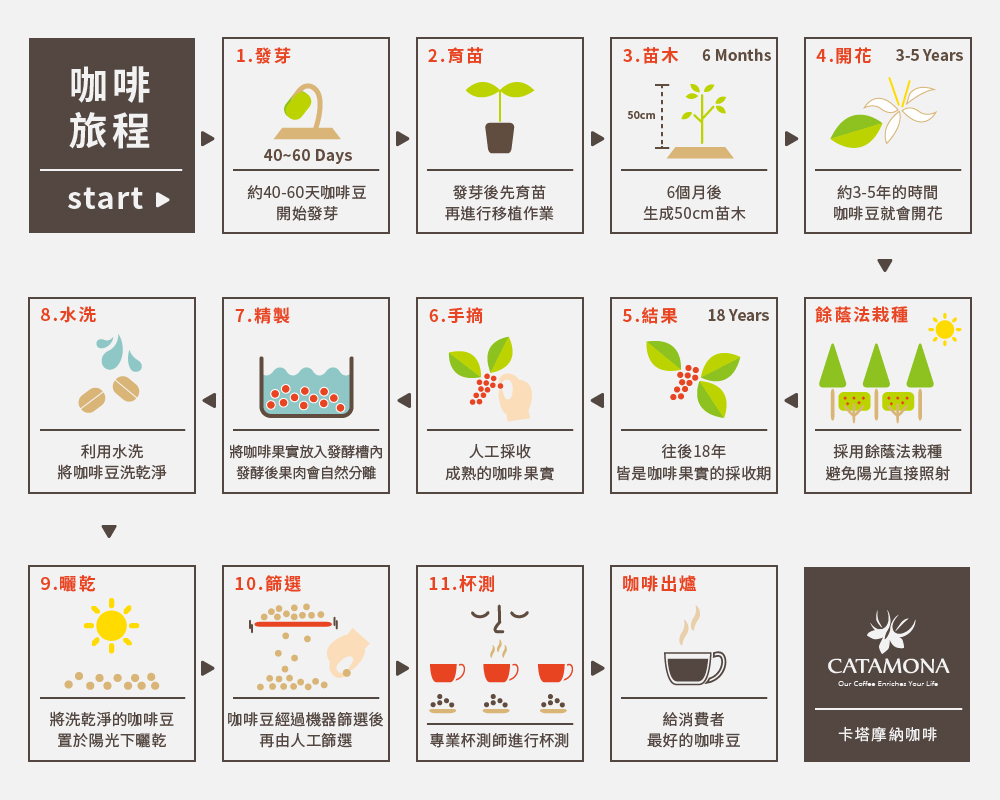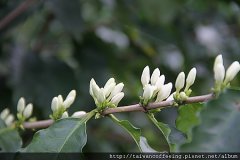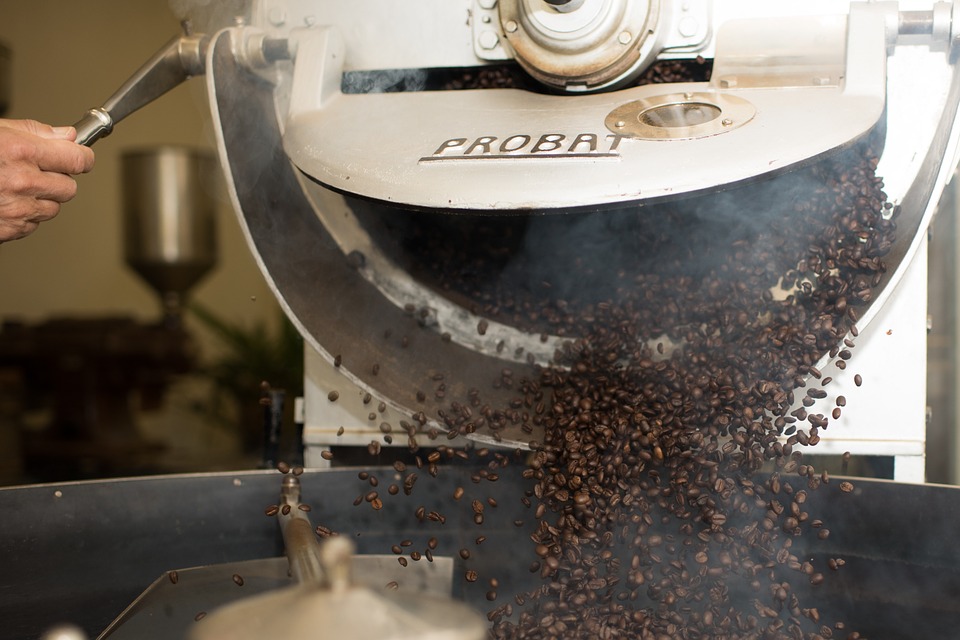Starting from Coffee cultivation-the upcoming planting and Environmental problems in Coffee growing areas in Yunnan

Professional coffee knowledge exchange more coffee bean information please follow the coffee workshop (Wechat official account cafe_style)
A coffee tree bears fruit several times a year.
Coffee is one of the agricultural products, and its yield varies according to region, climate, altitude, planting mode and other factors. Since coffee has swept the world and become the most popular drink in western countries, the demand for this drink has increased all over the world. From the most preliminary and primitive forest planting, coffee-producing countries have gradually developed planting methods, varieties, and treatment methods that can increase production, good supply and rising demand; however, in this process, there are also environmental, economic and trade problems.
This issue will start with the way coffee is grown, and discuss the impact of planting on the environment.
V.S unshaded planting (also known as sun exposure)
The process of coffee fruit growth
Arabica coffee beans are suitable for growing in a warm environment without excessive sun exposure and rainfall, so most of the plants are planted in the "shade method", through tall forests to secluded and low coffee trees. This cultivation method is strongly supported and promoted by environmental groups, because it reduces the damage to the environment, so that the forest is preserved, and the primitive ecology and birds can continue to inhabit here. However, due to its yield and rust [Note 1] disasters, some producing areas have changed to other varieties of coffee that do not need shade, such as Kaddura (caturra), catuai (Kaduai) or other stronger coffee beans such as Robusta, which can be planted on flat land, exposed to the scorching sun, and have strong resistance to diseases and insect pests.
Sun-exposed planting
Planting by Yu Shade method
Yu Yinfa, the chief culprit of rust?
Coffee leaves suffering from rust
"long live Coffee" mentions the coffee rust in 1870, which dealt a heavy blow to the coffee industry from Ceylon coffee fields to the entire East Indies at that time. Experts and scholars looked for the cause. Some thought it was moisture, while others suggested that it was because of the dadap tree species planted by Yu Yinfa. These sources are correct. ─ dadap tree species are sheltered to cause moisture and eventually lead to mold breeding. But the real trigger is the single crop ─ large tracts of dadap trees and large tracts of single varieties of coffee, making the mold spread quickly and defenseless, thus discovering or producing robusta beans or other sturdy beans that are more resistant to diseases and insect pests.
─ Coffee was also responsible for the disappearance of the rainforest.
The advantage of Yu Yin's method is that it retains the old environment and allows the original species to inhabit, but the yield and planting density are not as good as that of exposure, so the ─ merchants and farmers on the other side of the Libra of coffee interests cut down the big trees of the rainforest and set them on fire, then sprinkled with fertilizer and planted coffee beans that are high-yielding and convenient for planting. As a result, a large area of the forest has been transformed into a large coffee forest, and coffee has also joined the disappearance of the rainforest.
Rainforest felling and burning
Libra of Environmental Sustainability and benefit
In the past, most businessmen pursued fast and stable coffee production, but as a result, overdevelopment led to a counterattack by nature. with the imbalance between environment and demand, the coffee supply chain [Note 2]. People have to face that in addition to owning coffee now, people have to try to think about what it means to "own" coffee in the longer term; the issue of sustainability continues to be discussed in the coffee industry. Relevant groups and certification are also created in response, in order to strike a balance between the environment, coffee merchants and consumers. They believe that what is better for the environment and producers is the best for consumers. However, as modern consumers, what we should consider is not simply the high or low amount of money, concessions, etc., but the things behind this food, ─, we want to have ─ now or "longer-term ownership".
Maybe next time when you buy coffee beans, in addition to paying attention to the producing area and packaging, you might as well consider these relevant certified products.
Introduction to related certification
UTZ certification
Through the farmers, environment-friendly planting methods, improve the planting environment, farmers' living environment, and establish a strict and transparent production resume, so that consumers can clearly grasp the source of products.
Rainforest Alliance
Through traditional agricultural planting instead of deforestation, reduce the damage to the rainforest and the environment, and at the same time protect the rights and interests and welfare of farmers.
Fair trade
Efforts are made to promote fair trade among consumers, traders and producers so that producers in developing countries can get better income out of poverty and reduce layers of exploitation by intermediate stakeholders.
Note:
1. Rust, also known as coffee rust (coffee rust)
Most of the coffee leaves occur on the coffee leaves, and a few of them are infected to young fruits and tender stems; the infected coffee leaves show light macula and then turn black and spread to the whole coffee leaves, making the leaves droop and dry up, and after serious infection, to affect photosynthesis and fruit to yield.
two。 In recent years, many reports have pointed out that in the next few years, the production of coffee will be far less than the demand, in the state of imbalance between supply and demand, coffee may become a high unit price drink that can only be consumed by a small number of people.
.
Important Notice :
前街咖啡 FrontStreet Coffee has moved to new addredd:
FrontStreet Coffee Address: 315,Donghua East Road,GuangZhou
Tel:020 38364473
- Prev

Coffee planting and cultivation techniques Arabica coffee how to plant coffee seeds and how to grow into trees
Professional coffee knowledge exchange more coffee bean information please follow the coffee workshop (Wechat official account cafe_style) A coffee tree bears fruit several times a year. Coffee tree is a kind of plant that is very sensitive to climate, sunshine, Rain Water and soil. when a coffee bean sprouts up and takes root in the soil, it will squeeze the bean out of the soil.
- Next

Professional coffee roasting | difference and difference between semi-hot air baking and direct fire roasting
Professional coffee knowledge exchange more coffee bean information please follow the coffee workshop (Wechat official account cafe_style) or declare first, this is my experience, not objective, because very few people can in the same structure, the same system, the core component of the bean roaster [roaster bucket] from half-hot air to straight bucket, and then compare, and then publish the experience. It is not
Related
- Beginners will see the "Coffee pull flower" guide!
- What is the difference between ice blog purified milk and ordinary milk coffee?
- Why is the Philippines the largest producer of crops in Liberia?
- For coffee extraction, should the fine powder be retained?
- How does extracted espresso fill pressed powder? How much strength does it take to press the powder?
- How to make jasmine cold extract coffee? Is the jasmine + latte good?
- Will this little toy really make the coffee taste better? How does Lily Drip affect coffee extraction?
- Will the action of slapping the filter cup also affect coffee extraction?
- What's the difference between powder-to-water ratio and powder-to-liquid ratio?
- What is the Ethiopian local species? What does it have to do with Heirloom native species?

